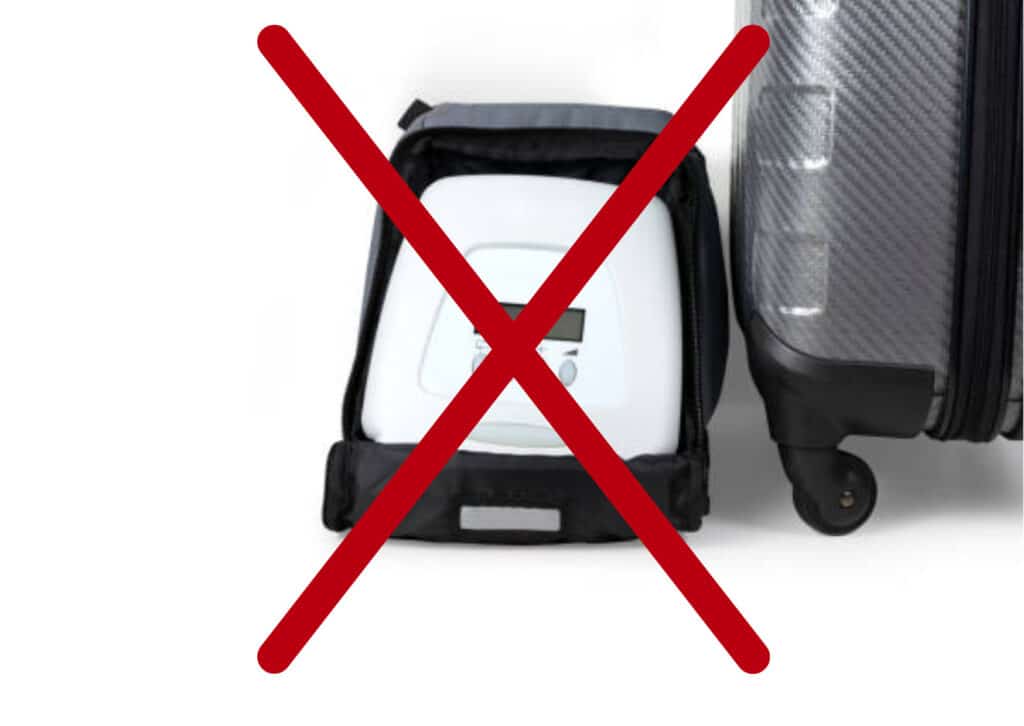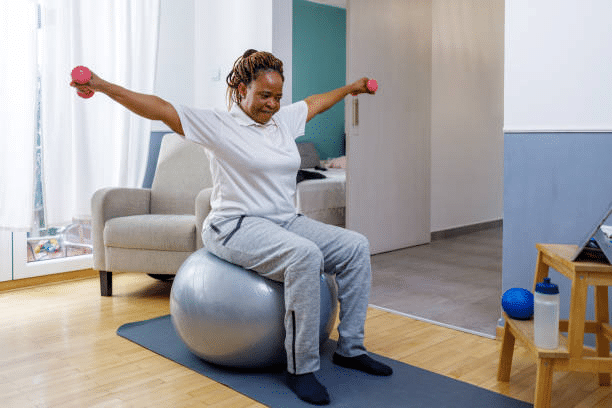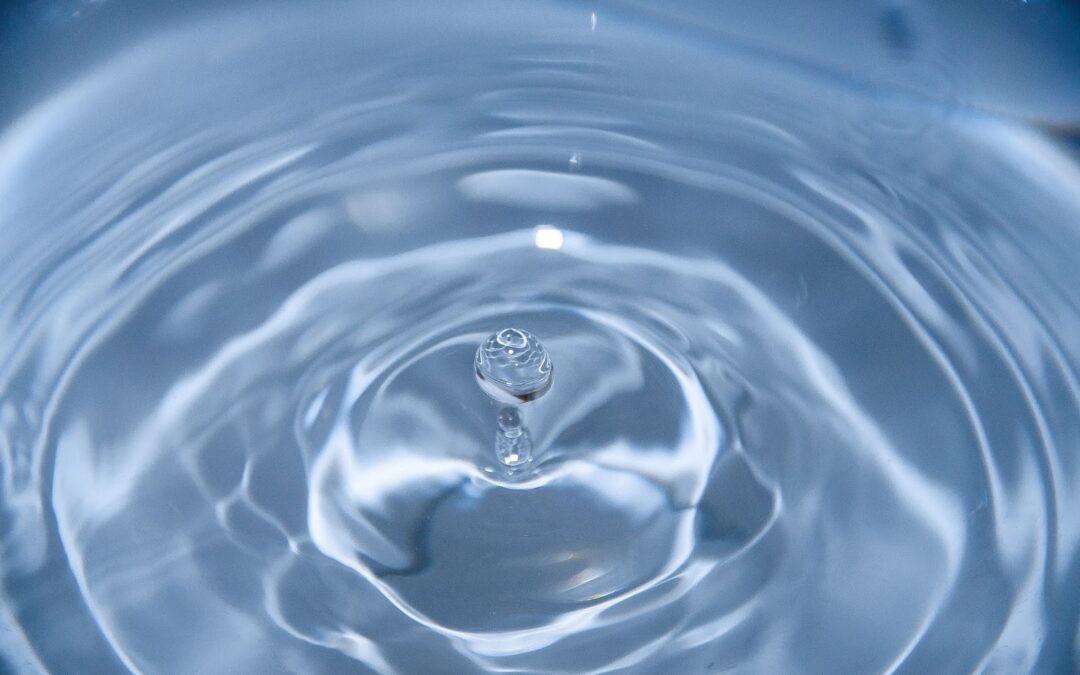CPAP therapy is an effective treatment for sleep apnea, but it can be cumbersome to travel with. Fortunately, CPAP alternatives are available for those who need to manage their sleep apnea symptoms while on the go. These alternatives include sleep apnea mouthpieces, nasal breathing strips, and EPAP valves. Read until the end to learn more.
Is CPAP The Only Therapy For Sleep Apnea?

The most effective treatment for severe obstructive sleep apnea (OSA) is still Continuous Positive Airway Pressure (CPAP) therapy, and regular CPAP usage positively impacts many people’s lives. But for some individuals, sustaining CPAP compliance might be challenging because they find it difficult to tolerate the constant airflow or because of a variety of other issues, such as:
- Mask Leaks
- Nasal Dryness
- Claustrophobia
- Dry Mouth
Fortunately, many typical CPAP issues have several fixes. Regardless of your treatment, treating your sleep apnea may significantly improve your quality of life and lower your risk of developing severe health conditions like heart disease and diabetes.
Why Consider Sleep Apnea Treatments Without CPAP?
CPAP Alternatives are sought by people diagnosed with sleep apnea for a variety of reasons, including the following:
Compliance Requirements
Users of CPAP machines must adhere to a 30-day compliance period set forth by insurers like Medicare, during which they must use the device for at least four hours each night on at least seventy percent of all nights. Patients may have a hard time meeting all of these standards, and they may also feel like it infringes on their privacy.
Adverse Effects
Users of CPAP report a wide range of side effects. Some people find wearing the mask uncomfortable, while others develop dry mouth, red or itchy eyes, and stuffy or runny noses as a result of wearing it. Noise caused by mask leaks can disrupt sleep for people who use CPAP machines and their sleeping partners.
Cost
The out-of-pocket expense for the device begins close to $250 and can go as high as $1,000 or even higher. When you acquire a CPAP machine via your insurance, you are typically compelled to enroll in a rent-to-own plan with stringent compliance requirements if you want to keep using it.
The Problem With CPAP
A CPAP machine is frequently the first defense against sleep apnea and its associated health risks. However, because of the numerous hassles associated with CPAP, many patients either stop using it or altogether avoid it. The mask is heavy, and wearing it can be painful, and the machine has a droning sound that can make it difficult to fall or stay asleep. In addition, CPAP requires that you sleep on your back and remove the mask from your face each time you get out of bed.
CPAP Alternatives For Treating Sleep Apnea
There are other methods for managing your sleep apnea if, despite your best efforts, you must refrain from committing to routinely using your CPAP machine. Although many of the following alternatives have benefited obstructive sleep apnea patients, we firmly advise you to speak with your doctor before modifying your sleep apnea treatment plan.
Oral Pressure Therapy (OPT)
Negative pressure is applied to the mouth to move the tongue and soft palate forward during oral pressure therapy for OSA. Many people consider using a machine and a mouthpiece less intrusive than using CPAP masks for this procedure.
OPT first seemed very promising, but in a multi-center study conducted in 2013, it was shown to be much less effective at treating OSA than CPAP devices. While some individuals may completely eliminate their OSA symptoms by utilizing an OPT device, most only enjoy partial symptom alleviation, with most reporting an average decrease in apnea occurrences of about 50%.
Tongue Retaining Devices
Mouthpieces called tongue retainers are used to stop snoring. Some of the sleep apnea symptoms may also be treated with them. While sleeping, the mouthpiece keeps your tongue from slipping back into your airway by holding it forward.
An evaluation of 16 trials on tongue-retaining devices undertaken in 2017 led to the efficacy finding that “tongue-retaining devices provide a statistically effective alternative option for treating obstructive Sleep Apnea.” It should be emphasized, nevertheless, that the average decrease in apnea occurrences was just 53%, well short of CPAP therapy’s efficacy.
Expiratory Positive Airway Pressure (EPAP) Valve
Before retiring to bed, connect an EPAP valve to your nostrils. As you exhale, the valve utilizes the pressure created by your breath to maintain your airway open until your subsequent inhalation. Unfortunately, unlike CPAP machines, EPAP devices cannot deliver pressure during inhalation, which reduces the overall efficacy of these devices.
However, a thorough 2011 analysis of nine controlled trials revealed that EPAP treatment was linked to significantly lower rates of apnea occurrences and snoring. The more people with mild, moderate, or even severe OSA took EPAP treatment, the less sleepy they felt. For those who cannot handle the constant airflow of a CPAP machine, EPAP is a helpful alternative, even if CPAP is still the best method for treating OSA.
Continuous Negative External Pressure (cNEP)
Contrary to CPAP devices, which provide positive pressure to the airway, cNEP works by exerting negative pressure on the airway’s outside. It delivers suction to the neck region to widen the upper to middle airway while you sleep.
A 2019 research found that although cNEP is still very new, at least 50% fewer apnea occurrences occurred in 75% of the test group. The research concluded that, when used correctly and with suitable training, cNEP is “well-tolerated” and may effectively cure OSA.
CPAP treatment has traditionally been proven to decrease apnea occurrences by 80-95% for those who adhere to it. Thus this should be taken with a grain of salt.
Orofacial Therapy
Regarding your mouth, orofacial treatment is similar to physical therapy. You may follow a regimen of face and mouth exercises recommended by a myofunctional therapist for six to twelve months. Orofacial treatment can treat snoring and mild to severe OSA caused by tongue or tissue relaxation during sleep.
Myofunctional therapy, albeit not needed as a complete CPAP replacement, was an effective strategy to minimize apnea occurrences when used in conjunction with CPAP treatment in a 2015 meta-analysis that included nine trials employing the therapy.
Sleep Position
If you sleep on your back with your face turned toward the ceiling, often known as the supine position, you will experience a more significant number of apnea episodes throughout the night. If you have obstructive sleep apnea (OSA) and sleep on your back, your tongue and larynx may get in the way of your ability to breathe.
Sleeping on your side, rather than your back, is recommended by medical professionals as a way to mitigate the effects of obstructive sleep apnea (OSA). Studies have shown that patients who use gadgets that vibrate and notify them when lying on their backs have fewer apnea episodes. However, there is a problem with maintaining adherence to these gadgets, and the technology itself has to be improved.
Surgery
As an alternative treatment option to CPAP, surgery may be suggested to either alleviate sleep apnea symptoms or eliminate the condition. Surgical procedures may involve the removal of enlarged tonsils or extra tissue, as well as the expansion of airways in the patient’s nose or throat. These are effective, although certain patients find them quite invasive, despite their effectiveness.
Hypoglossal Nerve Stimulator
When performing hypoglossal nerve stimulation, the clinician will position a stimulator below the patient’s chest. The hypoglossal nerve, located in the neck, and the intercostal muscles, located in the chest, are both attached to the stimulator.
When the patient goes to bed, they will use a remote control operator to turn on the stimulator in their device. As you breathe, the device stimulates the hypoglossal nerve, which in turn causes the tongue to migrate out of the airway, providing a more unobstructed channel for breathing.
Also Read: 7 CPAP Alternatives for Sleep Apnea 2023
CPAP Alternatives For Traveling

You may be used to using your CPAP machine at home, but you may need to figure out what to do when you travel. Anyone who has attempted to take their CPAP machine on the road can attest to the inconvenience.
Fortunately, there are CPAP devices that are smaller and simpler to carry through security that are made expressly for use when traveling. You may, for instance, try the following:
1. Sleep Apnea Mouthpieces
These mouth guards help keep the airway open while you sleep. They are custom-fit to your mouth and work by keeping the tongue and soft tissues from collapsing and blocking the airway. They are easy to pack, convenient for travel, and a good alternative for those who can’t tolerate CPAP machines.
2. Sleeping on Your Side or Propping Your Head Up With Extra Pillows
Sleeping on your side can help to keep your airway open by preventing the soft tissues at the back of your throat from collapsing. Propping your head up with extra pillows can also help to keep your airway open by raising your head and neck.
3. Packing a Travel Humidifier To Increase the Air Moisture
Dry air can trigger sleep apnea. Filling a travel humidifier can help increase the air moisture in your sleeping area and make breathing easier.
4. Nasal Breathing Strips
These adhesive strips can help open the nasal passages and improve airflow. They can be a good option for those with mild sleep apnea or snoring.
5. EPAP Valves
Expiratory Positive Airway Pressure (EPAP) valves are small devices that attach to your nostrils before sleep. They use your breath to create pressure as you exhale, keeping your airway open until your next inhale. They are less effective than CPAP machines but can be a good option for those who cannot tolerate the continuous airflow of a CPAP machine.
Different PAP Treatments
When it comes to obstructive sleep apnea treatment, CPAP devices are a common solution that delivers air at a steady pressure all night. However, some individuals may find the pressure uncomfortable. Consider alternative PAP machines and emerging therapies in such cases.
BiPAP (Bilevel Positive Airway Pressure)
BiPAP machines, also known as BPAP, deliver air at two different pressures: a higher pressure during inhalation and a lower pressure during exhalation. Doctors typically prescribe it for people with more severe sleep apnea or those who cannot tolerate the constant pressure from CPAP. BiPAP machines provide greater comfort and make it easier to exhale, making it an excellent alternative for people with difficulty breathing against high pressure.
Also Read: BiPAP Therapy: A Promising Treatment for Central Sleep Apnea
APAP (Automatic Positive Airway Pressure)
APAP machines, also known as auto-titrating CPAP, adjust the pressure of the air delivered to your airway throughout the night based on your breathing patterns. This device is ideal for people with difficulty adapting to a single, fixed pressure setting and for those whose pressure needs may change over time. APAP machines can detect changes in breathing and adjust the pressure accordingly, providing more flexibility and comfort than a traditional CPAP machine.
EPAP (Expiratory Positive Airway Pressure)
EPAP devices are small valves that attach to your nostrils and create pressure during exhalation, keeping your airway open until your next inhale. It is an effective alternative to CPAP for people who cannot tolerate the continuous airflow of a CPAP machine. While EPAP devices do not provide pressure during inhalation, they effectively reduce apnea events and snoring.
Emerging Therapies
Researchers and developers are still researching and developing newer forms of PAP therapy known as emerging therapies. Examples of emerging therapies include:
- Implantable devices: Doctors surgically implant these devices into the airway to stimulate the muscles that keep the airway open during sleep. While these devices are still testing, they have shown promise in treating sleep apnea.
- Positional therapy: Positional therapy involves using devices or techniques to keep you sleeping in a particular position to prevent airway obstruction. This may include special pillows, wearable devices, or even sleep training.
- Hypoglossal nerve stimulation: This involves implanting a device that stimulates the nerve that controls the tongue and other throat muscles, keeping the airway open during sleep
Lifestyle Changes For Sleep Apnea Management

Regardless of whether you use CPAP or not, there are several lifestyle adjustments you may make to assist in managing your sleep apnea symptoms:
1. Exercise And Losing Weight
Overweight people often have fat deposits in their necks, which may obstruct their upper airways and restrict their ability to breathe as they sleep. You may attempt a few easy but surprisingly efficient sleep apnea exercises to enhance your breathing and decrease symptoms.
2. Oropharyngeal Exercises
These exercises are designed to strengthen the muscles in the mouth and throat, which can help prevent airway collapse during sleep. Examples of oropharyngeal exercises include tongue slides, tongue press-ups, and the “aah” exercise. By practicing these exercises regularly, you can improve the tone and strength of your oropharyngeal muscles, reducing the likelihood of airway obstruction during sleep.
3. Mild Cardio and Stretching Regimens
Regular exercise can help promote weight loss and improve cardiovascular health, which can both help prevent sleep apnea. By engaging in gentle cardio exercises like brisk walking, jogging, or swimming, you can burn calories and shed excess weight, reducing the pressure on your airway during sleep. Stretching exercises like yoga can also improve muscle tone and flexibility, reducing the likelihood of airway obstruction during sleep.
4. Yoga
Yoga is a gentle form of exercise that can help reduce stress and anxiety, promote relaxation, and improve muscle tone and flexibility. Certain yoga poses, like the “Cobra” pose, the “Fish” pose, and the “Plow” pose, can also help strengthen the muscles in the mouth and throat, reducing the likelihood of airway obstruction during sleep. Additionally, regular yoga practice can help promote weight loss and improve cardiovascular health, which can help prevent sleep apnea.
5. Experiment Different Sleeping Position
A 2013 meta-analysis of 20 sleep apnea studies show that 56% of OSA patients also have POSA or position-dependent OSA. The research also discovered that a very efficient and cost-effective method for treating POSA is employing pillows or wearable gadgets to assist side sleeping while applying positional treatment.
Simply stated, your sleeping posture counts when it comes to lessening sleep apnea symptoms. The worst position to sleep in if you have OSA is flat on your back because when your muscles relax, the soft tissue at the back of your throat may easily collapse across the airway.
If your OSA is position-dependent, going from back-to-side sleeping might help you experience fewer sleep apnea symptoms. There are gadgets you can wear to get vibration feedback whenever you turn onto your back if you’re having difficulties getting yourself to sleep on your side. To maintain stability and comfort when lying on your side, you may also utilize pillows behind your back, in front of you, and between your knees.
If you can’t sleep on your side, raise your knees with a thicker cushion and keep your head from leaning forward with a flatter pillow. Some back sleepers get comfort when they sleep on their backs more upright and with a wedge cushion beneath them. Specialty pillows might be expensive, but spending the extra money on those that support your whole body as you sleep rather than just your head can be worthwhile.
If you use a CPAP machine now, consider CPAP pillows. These pillows have been specially created to support various sleeping positions, including specialized cutouts for your mask and tubing.
Also Read: Different Types of CPAP Pillows
6. Stop Smoking
Because smoking interacts with each kind of sleep apnea differently, the relationship between the two conditions is complex. For the sake of this essay, our attention will be only on smoking and OSA.
According to a thorough 2014 research, smoking worsens OSA by interfering with your regular sleep cycle, inflaming the upper airway, making it harder to wake up naturally, and tightening the respiratory system’s muscles.
Another 2019 research found that compared to non-smokers with OSA, smokers with OSA had more apnea occurrences, lower blood oxygen levels, and increased daytime drowsiness. While giving up smoking won’t necessarily “cure” OSA, it will improve your general sleep quality and result in fewer apnea episodes.
7. Skip The Alcohol
Alcohol indeed interferes with your sleep, whether you know it or not. Before going to bed, drinking alcohol may prevent your brain from experiencing deep Rapid Eye Movement (REM) sleep. Drinking alcohol at night may also make it more likely that your throat and mouth tissues may relax as you sleep, potentially obstructing your airway.
Alcohol use was linked to longer AND more frequent apnea episodes and noticeably lower blood oxygen levels, according to a 2018 meta-analysis of 14 studies. This extensive research demonstrates that drinking increases your chances of both getting OSA and having OSA that is already present. Your OSA symptoms should improve if you stop drinking alcohol or significantly reduce your consumption.
Final Thoughts
It is essential to treat obstructive sleep apnea to avoid potential health risks. Inquire with your doctor about any CPAP alternatives that could be suitable for you. To provide your doctor with a detailed picture of how OSA impacts your life, note your symptoms and sleeping patterns. Together, you can create a treatment strategy to lessen your apnea episodes and improve your overall health.
For a wide selection of high-quality CPAP accessories that can support your treatment journey, explore our Amazon store. Equip yourself with the best tools to improve your sleep and health today.



